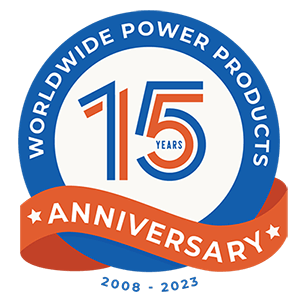Industrial Generator Sizing
Choosing the most advantageous size for industrial generators is not simply a budgetary matter of initial cost. Making the most appropriate choice for your needs can be a crucial consideration. The choices to be made include variables such as primary power supply or backup power, natural gas or diesel power, single-phase, three-phase, kW, or KVA. There are also brand names to consider, such as Cummins, Caterpillar, and others. And once you have decided on all of these factors, you are still faced with determining what size generator you need.
The advantages of planning, especially in considering your anticipated power needs, will benefit your business by rewarding your financial bottom line. Of the many advantages of choosing a generator of sufficient size, these are perhaps the most important:
- Increased usable life of the generator
- Consistent production performance
- Limiting of capacity overloads
- Limiting of unexpected system failures
- Reduced likelihood of asset damage
- Increased personal safety
- Reduction in frequency and cost of maintenance
- Increased ease and speed of maintenance
Of course, the primary consideration in sizing major components such as engines and generators is having sufficient power generation for your anticipated needs. Generators that lack the capacity to meet specific power requirements are a waste of resources. Your generator must be able to meet your ongoing needs. Just remember, your peak power needs are what you need to plan for. Don’t skimp on your power source or you risk losing valuable time, equipment, and investment capital.
A firm knowledge of how the generator sizing process works–or better yet, how you can make it work to your advantage–is your first objective in determining what size generator you will require. Your first and best option is always to consult a certified electrician to assess your specific needs. But there are some basic guidelines that can also smooth the process of deciding this important question.
Industrial generators are available in a range of sizes, from around 50kW to well over three Megawatts. Larger business and industrial applications obviously require more capacity. Office buildings, manufacturing facilities, data centers, and building complexes such as shopping malls, educational institutions, and living centers, all require larger-capacity generators. And this is true, of course, whether you are speaking of primary power supply or emergency back-up power generation.
How Big is Big Enough?
In generator sizing, it is a common misconception that a smaller generator will suffice in a back-up role, supplying only emergency, standby, or temporary power. The rationale is that these applications are of a short duration. But the risks involved in generator under-sizing include damage to the generator, itself, from exceeding its intended capacity, damage to other assets connected to that generator, increased risk of overheating and the possibility of electrical fires, and the production downtime for maintenance and repairs when failures occur. If you are going to err, do so on the safer side of more power, rather than less. A bit of an increase in initial cost can be a very wise investment.
Determining Your Power Generation Requirements:
While the well-known brand names, Cummins and Caterpillar, are reliable, they are still no substitute for matching your requirements to the power capacity of your natural gas or diesel generator. Here is a suggested list of actions you might take to better get a handle on your energy production requirements.
- Form a list of all items that will be powered
- List both the starting and running wattage for each piece of equipment
- Calculate your total power requirement from these figures, in KVA or kW
Starting and running wattage are typically recorded on the piece of equipment, itself, as well as in its owner’s manual. You may also encounter equipment that gives its power rating in amperes instead of watts. For these assets, you can convert the amps to watts with the following formula.
For “Resistive Load” the conversion is: Wattage = amperes x volts
For “Reactive Load” the conversion is: Wattage = (amperes x volts) x load factor
Power requirements can also be estimated if for any reason some of your equipment’s actual requirements cannot be determined. Here are some specifications estimates for you to use if owner’s manuals cannot be located, and/or the asset’s identification plate is damaged or missing.
- Average air compressor 4,000 starting watts 2,000 running watts
- Disc grinder 4,000 2,000
- Disc sander 1,200 1,200
- Jigsaw 300 300
- Planer 2,400 960
- Router 1,500 600
- Circular saw 2,400 1,200
- Chain saw 1,200 1,200
- Electric chain saw 2,400 1,200
- Central air cond. (10k BTU) 2,200 1,500
- Central air cond. (40k BTU) 6,700 6,000
Just as our name implies, Worldwide Power Products serves the needs of the world in power supply generation, with engines and generators in all sizes to fit your needs. We stock an impressive inventory. And we can get you what you want, when you need it.











